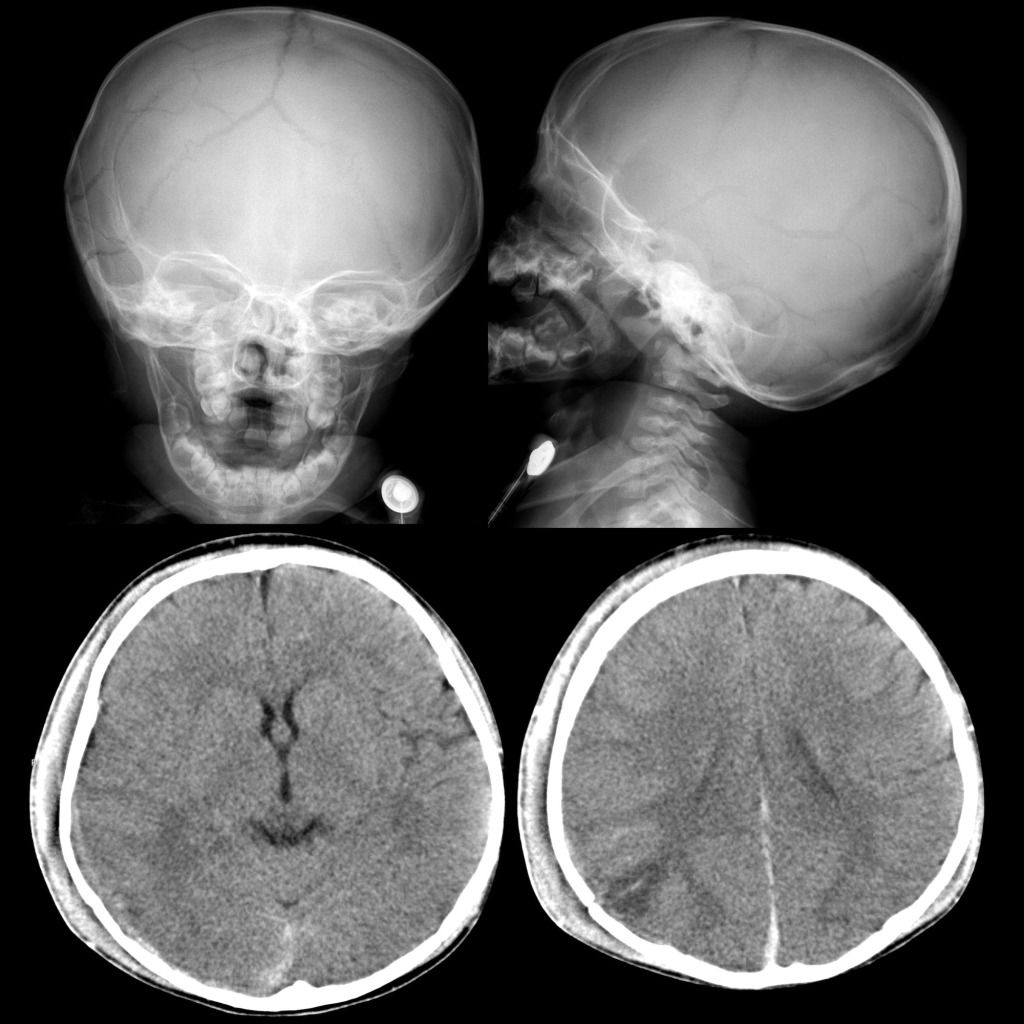- Etiology: venous hemorrhage due to tear of bridging veins and or intradural venous plexus, anticoagulation
- Imaging: semilunar / crescent shape, crosses sutures, does not cross falx or tentorium
- — Hyperacute – inner layer of high density clotted blood + outer layer of low density nonclotted blood
- — Acute – high density clotted blood
- — Hygroma – post traumatic acute low density subdural collection, not all acute subdural collections are dense on CT, a subdural collection can be hypodense similar to CSF due to tear in arachnoid membrane, subdural hematomas in anemic patients may also be low density
- — Chronic – common at convexity + posterior fossa, contrast enhancing membrane forms at 1 week, follow CSF signal, may come from acute subdural hematoma or subdural hygroma
- Note: can occur infratentorial as well as supratentorial
- DDX: benign enlargement of the subarachnoid space can mimic chronic bilateral subdural hematomas
- Clinical: when seen in infants < 2 years old without significant trauma history need to rule out child abuse as subdural hematoma is most common intracranial manifestation of child abuse
- Imaging evolution of subdural hematoma on CT:
— Up to 3 hours – hypodense
— 3 hours to 7-10 days – hyperdense
— 1 week to 4 weeks – isodense
— 1 month and up – hypodense - Note: variation may be seen in acute subdural hygroma, subdural hematoma in anemic patient, CSF leak into subdural collection through torn arachnoid membrane
- Imaging evolution of intracerebral hemorrhage evolution on MRI:
— Note: this is most commonly used to date subdural hematomas
| Age | State | T1WI | T2WI | |
| < 1 day | OxyHb | Iso | Bright | Hyperacute |
| 1-3 days | DeOxyHb | Iso | Dark | Acute |
| 3-7 days | IntracellularMetHb | Bright | Dark | Early Subacute |
| 1-3 weeks | ExtracellularMetHb | Bright | Bright | Late Subacute |
| > 3 weeks | Hemosiderin | Dark | Dark | Chronic |
Radiology Cases of Subdural Hematoma
Radiology Cases of Acute Subdural Hematoma






Radiology Cases of Chronic Subdural Hematoma

Radiology Cases of Acute and Chronic Subdural Hematoma



